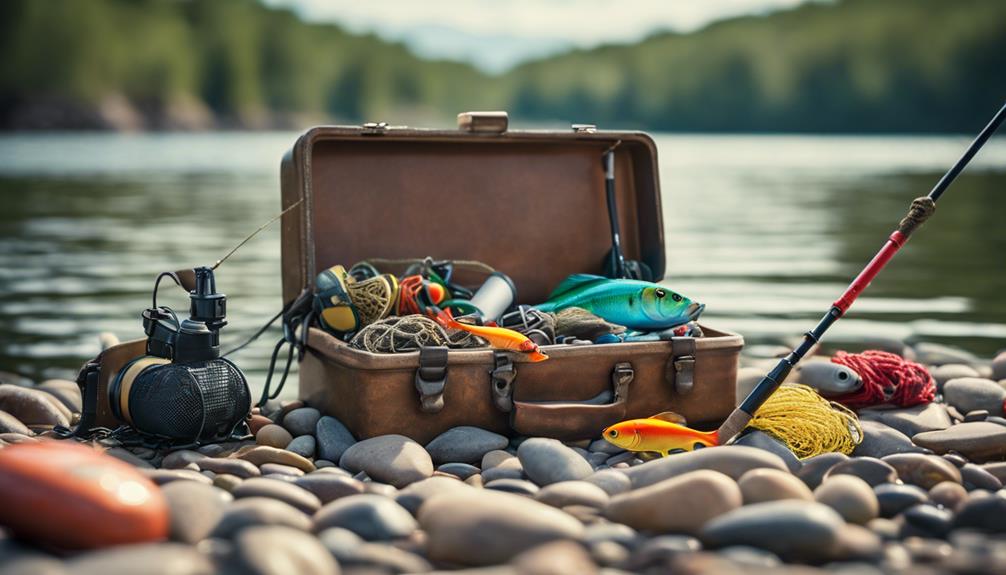What is Fly Fishing and Why is it Unique?
Fly fishing is a captivating angling method that distinguishes itself by using artificial flies as bait. Unlike traditional fishing, where bait is often live or lures are heavy, fly fishing employs lightweight flies that mimic the natural prey of fish. This technique is not just about catching fish; it’s an art form that involves understanding aquatic ecosystems, mastering casting techniques, and developing a deep appreciation for nature. The elegance of the cast, the thrill of the strike, and the serenity of the surroundings all combine to make fly fishing a unique experience that attracts enthusiasts from all walks of life.
The Essential Gear for Fly Fishing Success
To embark on your fly fishing journey, having the right gear is crucial. A basic fly fishing setup includes a fly rod, fly reel, line, and a selection of flies. The fly rod is designed to cast lightweight flies, with lengths varying from 7 to 10 feet. The fly reel plays a crucial role in managing line and fighting fish, while the fly line is specially designed to float or sink depending on the fishing conditions. Lastly, an assortment of flies—dry flies, wet flies, nymphs, and streamers—gives anglers options to target different species and adapt to varying water conditions. Investing in quality gear can significantly enhance your fly fishing experience.
Understanding Different Fly Fishing Techniques
Fly fishing encompasses several techniques, each tailored to specific environments and fish species. One of the most common methods is dry fly fishing, where anglers cast a floating fly that mimics insects on the water surface. Another popular technique is nymph fishing, which targets fish feeding beneath the surface using weighted flies. Streamer fishing, on the other hand, involves using larger, more substantial flies that imitate bait fish or other aquatic creatures. Mastering these techniques requires practice and patience, but they are essential for successful fly fishing outings.
Choosing the Right Location for Fly Fishing
The right location can make or break your fly fishing experience. Freshwater environments such as rivers, streams, lakes, and ponds are popular among fly fishers. Each location presents unique challenges and opportunities. For instance, rivers with fast currents offer exciting fishing for species like trout and bass, while still waters are ideal for targeting panfish or larger species like pike. Researching local water bodies and understanding their ecosystems will help you select the best spots for fly fishing, increasing your chances of landing that prized catch.
Seasonal Considerations for Fly Fishing
Seasonality plays a significant role in fly fishing success. Different fish species are more active during certain times of the year, influencing the choice of flies and fishing techniques. Spring is often prime time for trout fishing as they become more active after winter. Summer months can see a variety of species feeding, while fall is known for the migration of fish. Winter fishing can be challenging but rewarding for those willing to brave the cold. Understanding seasonal patterns and fish behavior is essential for optimizing your fly fishing trips throughout the year.
Conservation and Ethical Fly Fishing Practices
As passionate fly fishers, it’s our responsibility to protect the environments we enjoy. Conservation practices, such as catch and release, help maintain fish populations and preserve aquatic ecosystems. Using barbless hooks and minimizing handling can reduce stress on fish, increasing their chances of survival after being caught. Additionally, staying informed about local regulations and practicing Leave No Trace principles ensures that we leave the natural world as beautiful as we found it. Responsible fly fishing not only benefits the environment but also enhances the experience for future generations of anglers.
Tips for Beginners to Master Fly Fishing
For those new to fly fishing, it can be both exhilarating and intimidating. Start with taking casting lessons from experienced anglers or attending local workshops. Understanding the fundamentals of casting, line control, and knot tying will set a solid foundation. Additionally, consider starting with simpler gear, such as a 5-weight rod, which is versatile for various species. Practice patience, as fly fishing often requires time to develop skills and learn from mistakes. Joining local fly fishing clubs or online communities can also provide valuable tips and support as you embark on your fly fishing journey.
The Future of Fly Fishing: Trends and Innovations
Fly fishing is continuously evolving, with new trends and innovations shaping the future of the sport. Advances in technology have led to improved gear, such as lightweight rods and reels, and high-performance fly lines. Additionally, the rise of eco-friendly materials in fly tying is promoting sustainability within the sport. Social media has also played a significant role in connecting anglers worldwide, sharing tips, techniques, and experiences. As more people embrace fly fishing, fostering a community that values conservation and education will be essential to ensuring the sport remains vibrant for generations to come.
In conclusion, fly fishing is more than just a pastime; it’s a lifestyle that connects enthusiasts with nature and fosters a sense of community. By understanding the techniques, acquiring the right gear, and embracing ethical practices, you can enjoy a fulfilling and sustainable fly fishing experience. Whether you’re a beginner or a seasoned angler, the art of fly fishing offers endless opportunities for adventure, relaxation, and connection with the natural world. So grab your gear, find the perfect spot, and get ready to cast your line into the serene waters of fly fishing!
